In an era where digital footprints are increasingly scrutinized, the importance of location privacy on devices like the iPhone cannot be overstated. The iPhone, a powerful tool that integrates seamlessly into daily life, also serves as a repository of personal data, including location information. This data can reveal not only where a user has been but also their habits, routines, and even sensitive information about their personal and professional lives.
As such, understanding how to manage and protect this information is crucial for maintaining privacy in a world that often prioritizes convenience over security. Apple has implemented various features to enhance user privacy, particularly concerning location services. However, many users remain unaware of the extent to which their location can be tracked and shared.
From navigation apps to social media platforms, the demand for location data is pervasive. This article will explore various methods to safeguard your location privacy on an iPhone, ensuring that users can enjoy the benefits of their devices without compromising their personal information.
Key Takeaways
- Location privacy on iPhone is important for protecting personal information and preventing tracking.
- Turning off location services can be done in the iPhone settings to prevent apps from accessing location data.
- Airplane mode can be used to hide location, but it also disables other communication features.
- Disabling location sharing in apps is crucial to prevent them from accessing and sharing location data.
- Using a VPN can help mask location and add an extra layer of privacy when using the internet.
How to Turn Off Location Services
Turning off Location Services is one of the most straightforward ways to protect your location privacy on an iPhone. This feature allows apps and services to access your geographical location, which can be useful for navigation or local recommendations. However, it also means that your movements can be tracked by various applications, potentially leading to privacy concerns.
To disable Location Services, navigate to the Settings app, select Privacy, and then tap on Location Services. Here, you will find a toggle switch that allows you to turn off the feature entirely. Disabling Location Services can significantly enhance your privacy; however, it may also limit the functionality of certain applications.
For instance, if you turn off Location Services, navigation apps like Google Maps or Apple Maps will not be able to provide real-time directions based on your current location. Therefore, it is essential to weigh the benefits of convenience against the need for privacy. Users should consider turning off Location Services when they are not using location-dependent apps or when they are in sensitive situations where privacy is paramount.
Using Airplane Mode to Hide Location
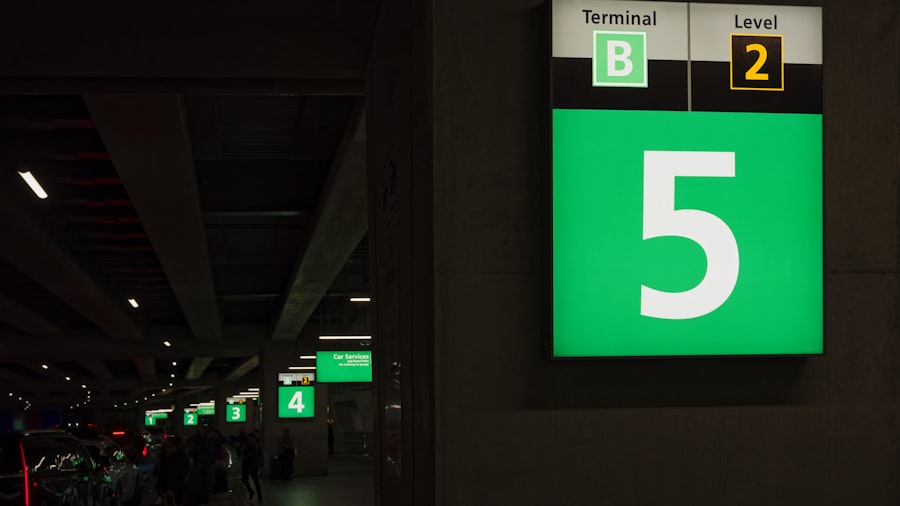
Another effective method for concealing your location is by enabling Airplane Mode on your iPhone. When Airplane Mode is activated, all wireless communication is halted, including cellular data, Wi-Fi, and Bluetooth connections. This means that your device cannot transmit or receive any signals that could reveal your location.
To activate Airplane Mode, swipe down from the top-right corner of the screen to access the Control Center and tap the airplane icon. While Airplane Mode effectively hides your location from tracking services, it also disables all forms of communication. This means you will not be able to make calls, send texts, or access the internet until you turn off Airplane Mode.
For users who prioritize privacy over connectivity in specific situations—such as during travel or in public spaces—this feature can be invaluable. However, it is essential to remember that once Airplane Mode is disabled, your location may once again become visible to apps and services that track it.
Disabling Location Sharing in Apps
| App Name | Number of Downloads | Percentage of Users Disabling Location Sharing |
|---|---|---|
| App 1 | 1,000,000 | 25% |
| App 2 | 500,000 | 30% |
| App 3 | 2,000,000 | 20% |
Many applications request permission to access your location for various reasons, from providing personalized content to enhancing user experience. However, users often overlook the implications of granting these permissions. Disabling location sharing within individual apps can significantly enhance your privacy without completely turning off Location Services.
To manage these settings, go to Settings > Privacy > Location Services and scroll through the list of apps that have requested access. For each app listed, you can choose from several options: Never, Ask Next Time, While Using the App, or Always. Selecting “Never” will prevent the app from accessing your location altogether, while “While Using the App” allows access only when the app is actively in use.
This selective approach enables users to maintain some level of functionality while still protecting their privacy. For instance, a weather app may need access to your location to provide accurate forecasts but does not require constant tracking when not in use.
Using a VPN to Mask Location
A Virtual Private Network (VPN) is another powerful tool for enhancing location privacy on an iPhone. By routing your internet connection through a secure server located in a different geographical area, a VPN masks your actual IP address and makes it appear as though you are browsing from another location. This can be particularly useful for accessing region-restricted content or maintaining anonymity while online.
To use a VPN on an iPhone, you can either subscribe to a reputable VPN service or use built-in options provided by some internet service providers. Once set up, you can easily connect to the VPN through the Settings app under VPN configurations. While a VPN primarily protects your online activities from prying eyes, it also adds an extra layer of security by obscuring your physical location from websites and services that track user data.
However, it is important to choose a trustworthy VPN provider that does not log user activity or sell data to third parties.
Turning Off Location Services for Specific Apps

For users who want more granular control over their location privacy, turning off Location Services for specific apps is an effective strategy. This approach allows you to maintain functionality for essential applications while restricting access for those that do not require it. To do this, navigate to Settings > Privacy > Location Services and select an app from the list.
Once you select an app, you will see options similar to those mentioned earlier: Never, Ask Next Time, While Using the App, or Always. For example, if you frequently use a ride-sharing app that requires your location for pickups but do not want a social media app tracking your movements at all times, you can set the ride-sharing app to “While Using the App” and the social media app to “Never.” This tailored approach ensures that you can enjoy the benefits of certain applications without compromising your overall privacy.
Using a Fake GPS App to Mislead Location
For those who wish to take their location privacy a step further, using a fake GPS app can be an intriguing option. These applications allow users to spoof their geographical location by providing false coordinates to other apps and services. This can be particularly useful for testing purposes or when trying to maintain anonymity in certain situations.
To use a fake GPS app on an iPhone, you typically need to download a third-party application designed for this purpose. Once installed, you can set a virtual location that will be shared with other apps instead of your actual position. However, it is crucial to note that using fake GPS apps may violate the terms of service of certain applications and could lead to account suspensions or bans if detected.
Therefore, users should exercise caution and consider the potential consequences before employing this method.
Disabling Location History in iPhone Settings
In addition to managing real-time location sharing, users should also consider disabling location history on their iPhones. Location history refers to the record of places you have visited over time and can be stored by various apps and services for personalized experiences or recommendations. To disable this feature on an iPhone, go to Settings > Privacy > Location Services > System Services and look for “Significant Locations.” By turning off Significant Locations, you prevent your device from keeping track of where you’ve been over time.
This not only enhances your privacy but also reduces the amount of data collected by Apple and third-party applications regarding your movements. It is worth noting that disabling this feature may impact certain functionalities like personalized suggestions in Maps or other location-based services; however, many users find that the trade-off is worth it for increased privacy.
Using Private Browsing Mode in Safari
When it comes to online activities on an iPhone, using Private Browsing Mode in Safari can further enhance your privacy by preventing websites from tracking your browsing history and storing cookies. In Private Browsing Mode, Safari does not save any information about your browsing session once you close the window; this includes search history and autofill data. To activate Private Browsing Mode in Safari, open the browser and tap on the tabs icon at the bottom right corner of the screen.
From there, select “Private” to enter this mode. While browsing privately does not hide your IP address or physical location from websites or internet service providers (ISPs), it does prevent Safari from retaining any information about your online activities during that session. This feature is particularly useful when using shared devices or when you want to ensure that your browsing habits remain confidential.
Turning Off Find My iPhone Feature
The Find My iPhone feature is designed to help users locate their devices if lost or stolen; however, it also means that Apple has access to your device’s real-time location data at all times when enabled. For those who prioritize privacy over convenience, turning off this feature may be necessary. To do so, navigate to Settings > [Your Name] > Find My > Find My iPhone and toggle it off.
Disabling Find My iPhone means that you will no longer be able to track your device’s location through Apple’s services if it goes missing; however, it also ensures that Apple cannot monitor your whereabouts through this feature. Users should carefully consider their options before disabling Find My iPhone since losing a device without this feature enabled could result in significant challenges in recovering it.
Conclusion and Recap of Privacy Measures
In summary, maintaining location privacy on an iPhone involves a multifaceted approach that includes disabling Location Services entirely or selectively for specific apps, utilizing Airplane Mode when necessary, employing VPNs for online anonymity, and even using fake GPS apps for added misdirection. Additionally, managing settings related to location history and utilizing Private Browsing Mode in Safari further enhances user privacy while navigating online spaces. By taking these proactive measures, users can enjoy their iPhones’ functionalities without compromising their personal information or exposing themselves to unwanted tracking.
As technology continues to evolve and data privacy concerns grow more pressing, understanding how to protect one’s location information becomes increasingly vital in safeguarding personal security in our interconnected world.
FAQs
What are some methods to hide my location on iPhone without others knowing?
Some methods to hide your location on iPhone without others knowing include using a VPN, turning off location services for specific apps, and using location spoofing apps.
How does using a VPN help in hiding my location on iPhone?
Using a VPN (Virtual Private Network) can help hide your location on iPhone by routing your internet traffic through a different server, making it appear as though you are accessing the internet from a different location.
Can I turn off location services for specific apps on my iPhone?
Yes, you can turn off location services for specific apps on your iPhone by going to Settings > Privacy > Location Services, and then selecting the specific app for which you want to disable location services.
Are there any location spoofing apps available for iPhone?
Yes, there are location spoofing apps available for iPhone that allow you to fake your GPS location and appear as though you are in a different place than you actually are.
Is it legal to hide my location on iPhone without others knowing?
The legality of hiding your location on iPhone without others knowing depends on the specific circumstances and the laws of your jurisdiction. It is important to consider the legal implications before using any methods to hide your location.





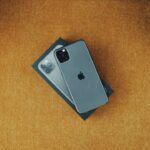

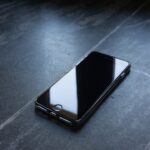

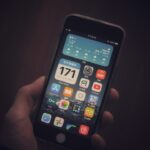
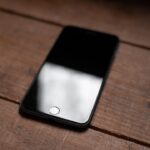
1 thought on “Secretly Hide Your Location on iPhone”